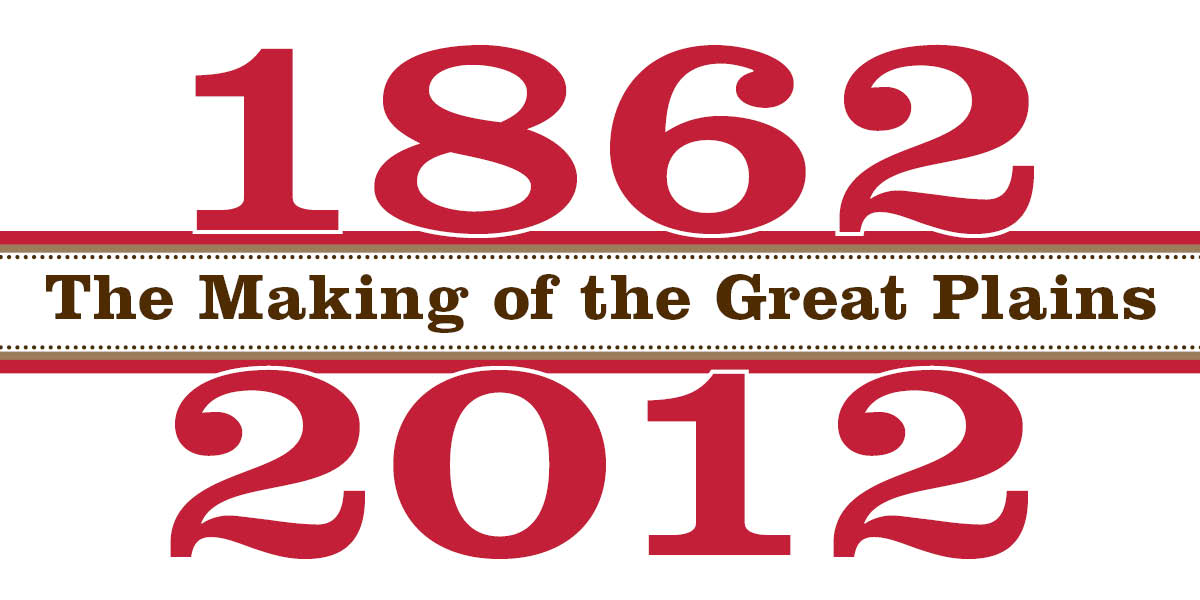
Researchers across the continent have come to UNL for a three-day symposium, March 28-30, focused on exploring the impact of four landmark pieces of legislation passed by Congress in 1862. These laws fundamentally shaped the Great Plains.
That year, Congress passed the Homestead Act, the Morrill Act that created the nation's land-grant colleges and universities, the Pacific Railroad Act and the act that established the U.S. Department of Agriculture. Also, 1862 saw the Dakota War, a conflict that set the nation on a path of military suppression of the region's American Indians.
The symposium, "1862-2012: The Making of the Great Plains," is sponsored by the Center for Great Plains Studies in collaboration with Homestead National Monument of America near Beatrice.
"We wanted this symposium to showcase those early acts of Congress and the Dakota conflict for the hugely important consequences, some positive and others negative that flowed from them," said Richard Edwards, director of the center and symposium co-chair. "They were central features framing the development of the Great Plains. The legislative acts focused on long-term payoffs in settling the western part of the U.S., developing a new kind of higher education, and creating a government agency to foster agriculture."
Ten nationally known speakers will talk on their areas of expertise. In addition, 74 presenters will give research papers in concurrent sessions, and another 23 scholars will present electronic posters of their work. The featured speakers include:
— Sarah Carter, Henry Marshall Tory Professor and Chair, Department of History and Classics and Faculty of Native Studies, University of Alberta
— Myron Gutmann, head, Directorate for Social, Behavioral and Economic Sciences, National Science Foundation, and professor of history and director, Population and Environment in the U.S. Great Plains Project, University of Michigan
— Martin Jischke, president emeritus, Purdue University
— William Thomas III, John and Catherine Angle Chair in the Humanities and Professor and Chair of History, University of Nebraska-Lincoln
— David Von Drehle, Editor-at-Large, Time Magazine
— Elliott West, Alumni Distinguished Professor of History, University of Arkansas
— Richard White, Margaret Byrne Professor of American History, Stanford University
— Daniel Wildcat, Director of the American Indian Studies Program, Haskell Indian Nations University
— David Wishart, Professor of Geography and GIS Science Faculty, School of Natural Resources, University of Nebraska-Lincoln
— Donald Worster, Joyce and Elizabeth Hall Professor of U.S. History, University of Kansas
The symposium will also feature performances by Jack Gladstone, award-winning singer/composer sometimes called "Montana's Blackfeet Troubadour."
The symposium opened with a March 28 presentation by Worster at the Lied Center for Performing Arts. Worster’s talk, "An Unquenchable Thirst: How the Great Plains Created a Water Abundance and Then Lost It," was cosponsored by the E.N. Thompson Forum on World Issues.
Three other symposium events are free to the public:
— Electronic poster session, March 29, 9:45 a.m.-3:15 p.m., Centennial Room, Nebraska Union, 14th and R streets;
— "Railroads, Art and the Making of Modern America," March 29, 7 p.m., lecture by William Thomas, Sheldon Museum of Art, 12th and R streets, jointly sponsored by the Sheldon (free tickets available at the door; seating is limited)
— "Indian-White Relationships in Historical Perspective," March 30, 1:45-3:30 p.m., panel discussion with Sarah Carter, Daniel Wildcat and David Wishart, Nebraska Union.
The remaining symposium schedule is:
March 29
8:30 a.m. – Elliott West, “1862: Another Year of Decision.”
9:45 a.m. – 3:15 p.m. – Electronic poster session in the Centennial Ballroom, open to the public
10:15 a.m. – Concurrent paper sessions
Noon luncheon – Martin Jischke, “The Morrill Land Grant Act: Investing in America’s Future.”
1:30 p.m. – Concurrent paper sessions
3:15 p.m. – Richard White, “Too Early? Too Many? Too Bad?: Railroads and American Settlement on the Great Plains.”
7 p.m. –William Thomas III, “Railroads, Art, and the Making of Modern America.” Sheldon Museum of Art, 12th & R Streets. The Sheldon is currently showing a related exhibit, “Railroads and the Making of Modern America.”
March 30
8:30 a.m. – Myron Gutmann, “Do People Matter? Population, Farming, and Environmental Change in the Settlement of the Plains.”
10:15 a.m. – Concurrent sessions
Noon luncheon – David Von Drehle, “So Many Important Questions: The 37th Congress and the New America”
1:45 p.m. – Three scholars will speak at a session, “Indian-White Relations in Historical Perspective.” Sarah Carter, “Erasing and Replacing: Prairie First Nations and the Homestead Order”; Daniel Wildcat, “The Coming Tribal Reclamation of the Great Plains”; and David Wishart, “The Dispossession of the Eastern Nebraska Indians, Genocide, Ethnic Cleansing, and Cultural Genocide.”
4 p.m. – The conference will close with a trip to Homestead National Monument where attendees will be enriched by a performance by Jack Gladstone, and Elliott West will summarize the symposium topic with “What Have We Learned?”
For more information, go to http://www.unl.edu/plains.
The Center for Great Plains Studies is an interdisciplinary, intercollegiate, regional research and teaching program chartered in 1976 by the University of Nebraska Board of Regents. This is its 38th annual interdisciplinary symposium. Homestead National Monument of America is a unit of the National Park Service located four miles west of Beatrice.
— Linda Ratcliffe, Center for Great Plains Studies
More details at: http://go.unl.edu/m52